Updated April, 2025
Toon Overvoorde has created many floral designs to fit the liturgical seasons, especially for Holy Week. We’re grateful to his brother Chris Stoffel Overvoorde for translating this article; Chris (over@calvin.edu) is also an artist and has been an RW consultant since we began 20 years ago.
—ERB
In most Dutch Protestant Churches (PKN), you’ll find a bouquet of fresh flowers each week on the Lord’s table. In my own congregation, a group of women usually purchases and arranges the flowers; after the service they deliver these arrangements on behalf of the church to a member of the congregation who is ill, or who is celebrating an anniversary or birthday. Whenever possible, these floral arrangements reflect the liturgical colors of the liturgical year: green for Ordinary Time, blue and purple for Advent, white for Christmas and other Holy Days, red and purple for Lent, and red for Pentecost.
I also create floral arrangements for several seasons of the liturgical calendar (Advent, Christmas, Lent, Easter, and Pentecost). We do not use artificial flowers in the church. As much as possible I try to convey something of the meaning of the liturgical season both in the selection and arrangement of the flowers. It is always a challenge to create something unique and beautiful.
Holy Week, culminating in Easter, is a wonderful season for using flowers, branches, and greens. Our congregation holds services on Maundy Thursday, Good Friday, “Stille Zaturdag” (Quiet Saturday), and, of course, Easter. The accompanying photos show what we did for Holy Week 2005.
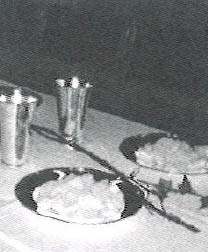
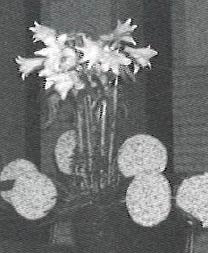
Maundy Thursday
The Lord’s Table is set for the celebration of the Lord’s Supper. On the table there are blackberry bramble branches and vines of hedera, a type of ivy. The bramble thorns represent Christ’s suffering and the hedera, which always remains green, represents eternity.
A floral arrangement of white lilies and matzos (unleavened bread). The white lily is the flower of innocence and purity. Matzos are connected with the deliverance from Egypt. Hedera reminds us of eternity.
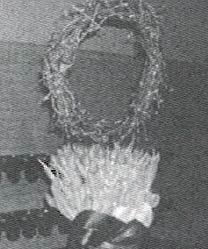
Good Friday
The crown of thorns, made from blackberry brambles, is installed above the flowers so that it is visible to the whole congregation. The flowers are violet tulips. The tulip is the flower of prayer, because it always rises upwards. Violet is the color of mourning, penance, and meekness.
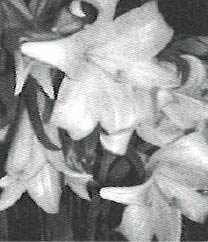
Saturday before Easter (Stille Zaterdag)
The matzo from the Maundy Thursday arrangement is removed; only the vase of white lilies is on the Lord’s table. This simple arrangement helps to provide a quiet atmosphere of silence and modesty. The congregation enters and departs the sanctuary in deep silence (see back cover).
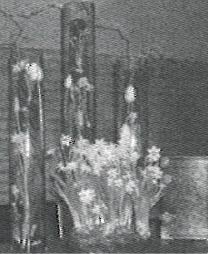
Easter
For Easter I chose yellow narcissus and tulips. The arrangement is set in glass sleeves, symbolizing the accessibility of God. The three vases remind us of the Trinity; the large floral arrangement of the congregation. Narcissus is the flower of the Easter trumpet; the color yellow is the color of light and joy. In between the tulips play. On Easter morning all the arrangements are placed on and around the Lord’s Table.
